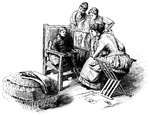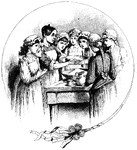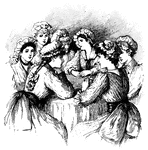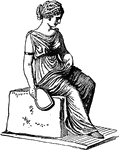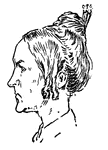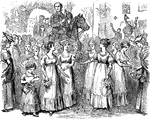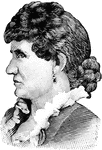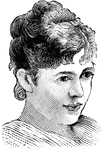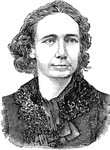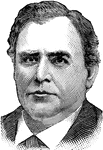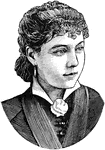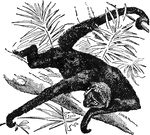
Spider Monkey
"Spider Monkey is a general name applied to many species of platyrhine or New World monkeys, distinguished…
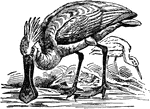
Spoonbill
"Spoonbill is the popular name of the birds of the genus Platalea, belonging to the heron family (Ardeidæ),…
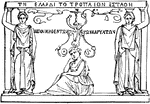
Caryatides
"Caryae was a city in Arcadia, near the Laconian border, the inhabitants of which joined the Persians…
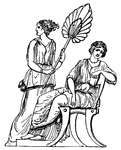
Cathedra
"A seat or chair, was more particularly applied to a soft seat used by women, whereas sella signified…
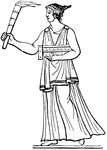
Cista
"A small box or chest, in which anything might be placed, but more particularly applied to the small…
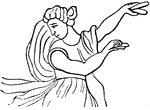
Crotalum
"A kind of cymbal. It appears to have been a split reed or cane, which clattered when shaken with the…
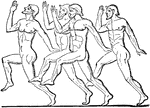
Foot-race
"The Olympic games were of greater efficacy than the Amphictyonic Council in promoting the spirit of…

Wrestling
"The Olympic games were of greater efficacy than the Amphictyonic Council in promoting the spirit of…
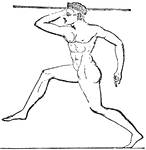
Hurling the javelin
"The Olympic games were of greater efficacy than the Amphictyonic Council in promoting the spirit of…
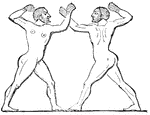
Boxing
"The Olympic games were of greater efficacy than the Amphictyonic Council in promoting the spirit of…

Tripod of Apollo
"It was the universal practice of the Greeks to undertake no matter of importance without first asking…
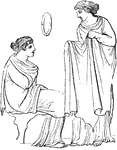
Peplus
"The peplus was a shawl which commonly formed part of the dress of females. It was often fastened…
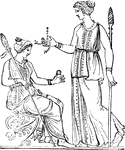
Women with necklaces
"It is a very common error to translate monile baccatum, "a pearl necklace". The ornament of…
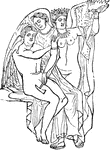
Women with necklaces
"It is a very common error to translate monile baccatum, "a pearl necklace". The ornament of…

Lectica
"Lectica was a kind of couch or litter, in which persons, in a lying position, were carried from one…
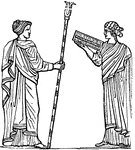
Mitra
"An eastern head-dress, sometimes spoken of as a characteristic of the Phrygians. It was also the name…

Pistor
"A baker, from pinsere, to pound, since corn was pounded in mortars before the invention of mills. At…
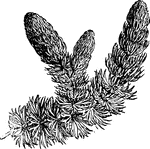
Hornwort
It is a slender aquatic herb, with whorled, finely dissected rigid leaves, and small solotary monoecious…
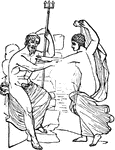
Reticulum
"A caul or coif of network for covering the hair, worn by women during the day as well as the night.…

Chara
They grow in pools and slow streams rooting in the ground and growing erect. Some species when taken…
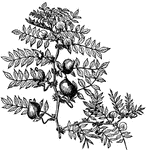
Chick Pea
It grows wild around the shores of the Mediterranean and many parts of the East, producing a puffy pod,…
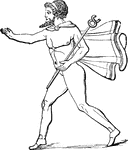
Mercury with caduceus
"Mercury, with his caduceus, summons the souls of the departed from Orcus, or the low world, as in the…

Talus
"Talus. The huckle-bones of sheep and goats were used to play with from the earliest times, principally…

Anna E. Dickinson
Orator and lecturer. Anna Dickinson is also known for being an abolitionist for women's rights.

Mrs. Parnell
Mother of Charles Stewart Parnell and is called an "American lady." She is the daughter of Commodore…
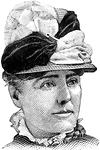
Kate Field
Miss Kate Fields was outspoken against Mormons and an author of Pen Portraits of dickens' Readings…
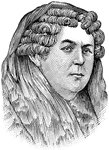
Elizabeth Cady Stanton
Mrs. Stanton was an early women's rights activist and abolitionist of slavery.
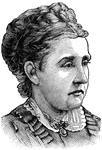
Julia Ward Howe
Julia was an abolitionist and poet. She is famous for the Battle Hymn of the Republic and for…

Frances Elizabeth Willard
Frances Elizabeth Caroline Willard was an educator and women's suffragist. She was president of the…

Dr. Mary Edwards Walker
Dr. Walker (1832-1919) was a feminist, abolitionist, prohibitionist, spy, prisoner of war, surgeon and…

George Francis Train
Known as the "Citizen Train," he was a confidante of French and Australian revolutionaries.
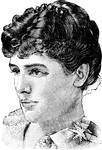
Jennie Churchill
Jennie Churchill, Mrs. Churchill was formerly Jennie Jerome. Lady Randolph Churchill was the mother…

Joseph Pulitzer
Pulitzer was a journalist and purchased the New York World. The Pulitzer Prizes were first…

Elizabeth Rodgers
Mrs. Rodgers was a delegate at the Knights of Labor convention at Richmond in 1887. She organized the…
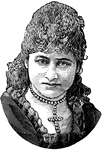
Mary Anderson
American actress who published two autobiographies, A Few Memories and A Few More Memories.

Frances Cleveland
Frances Clara Folsom Cleveland Preston was the First Lady of the United States, President Grover Cleveland's…

Emily Faithfull
Printer and publisher of her magazine, "Victoria Magazine," she employed only women and advocated women…
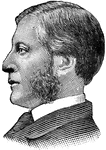
Charles W. Eliot
Educator who became president of Harvard and presided over a period of great growth which included the…

